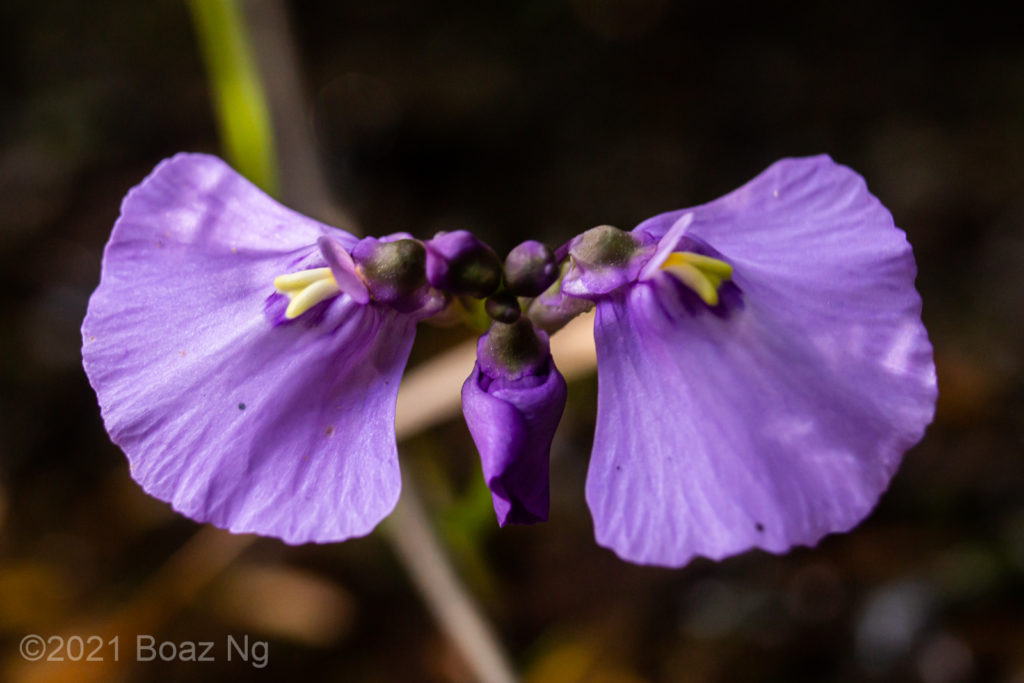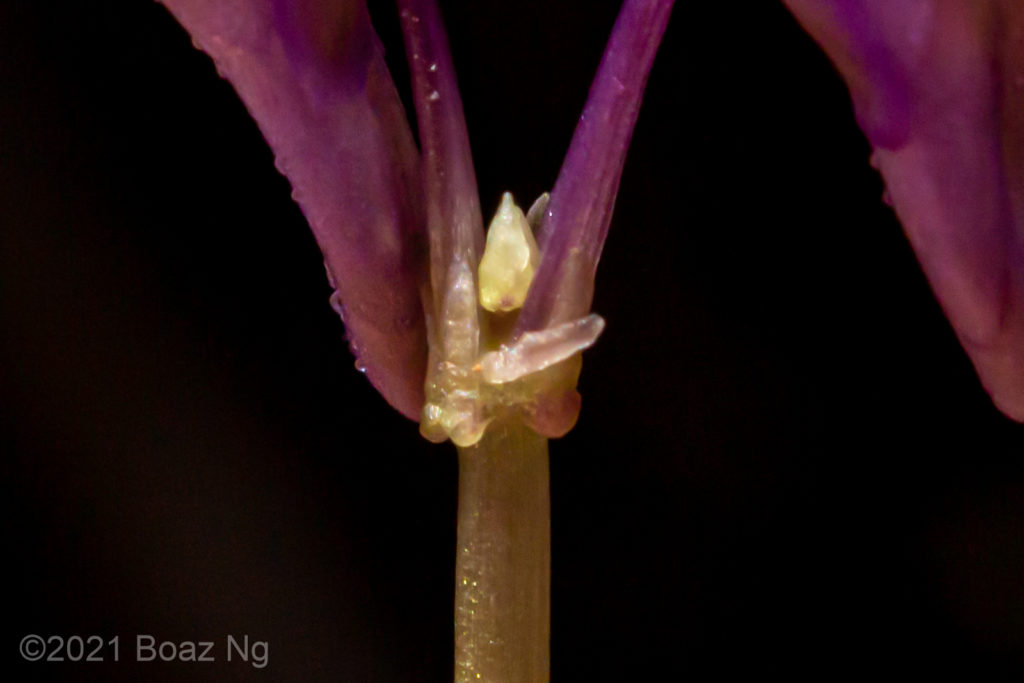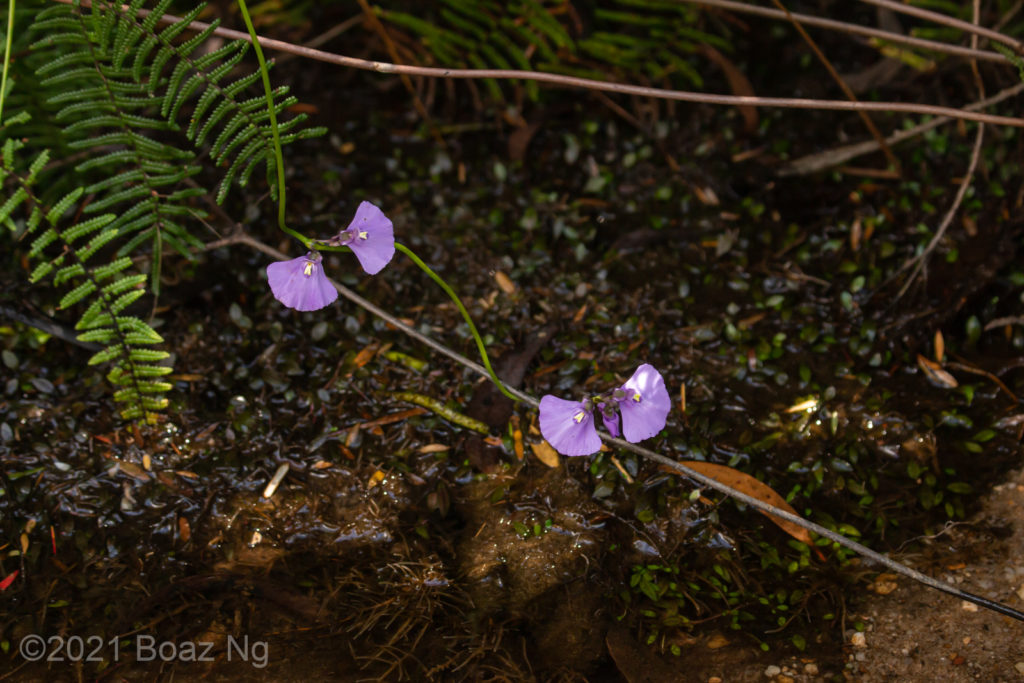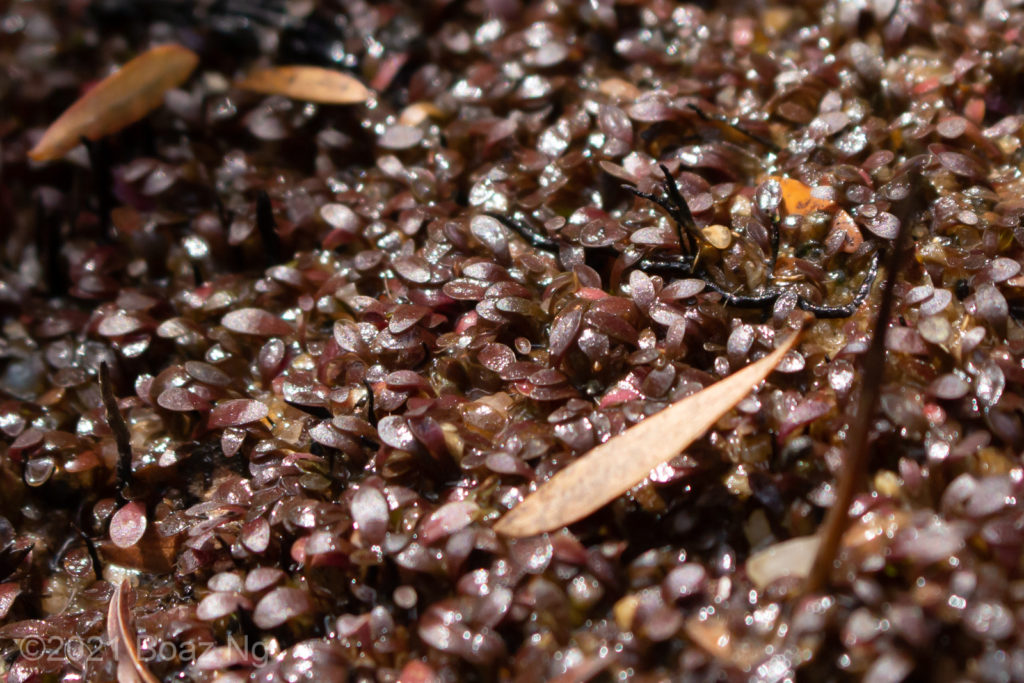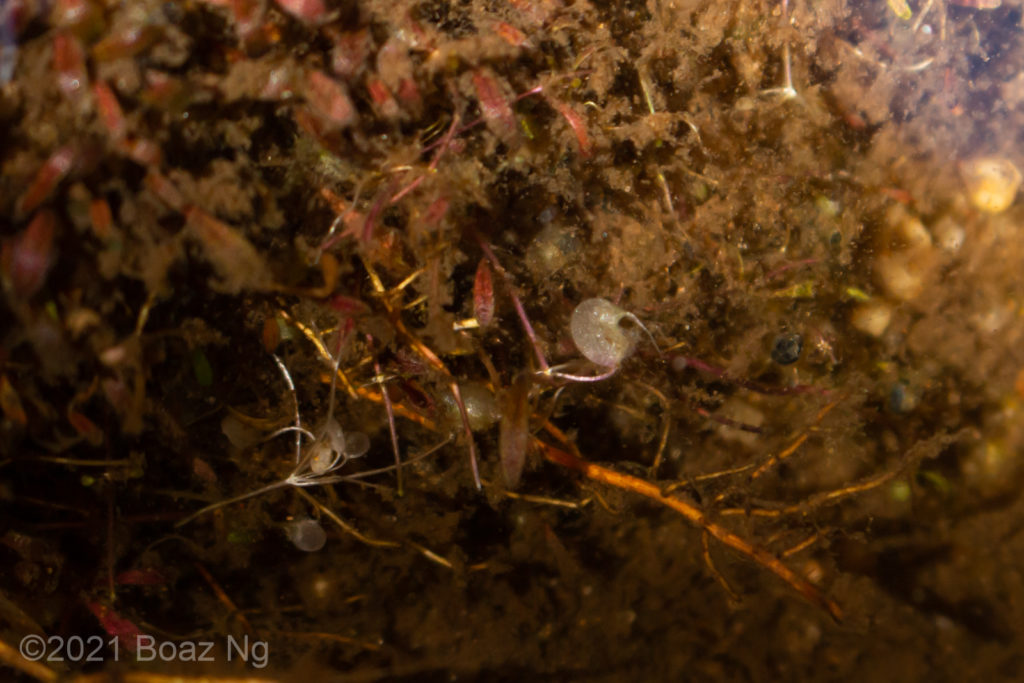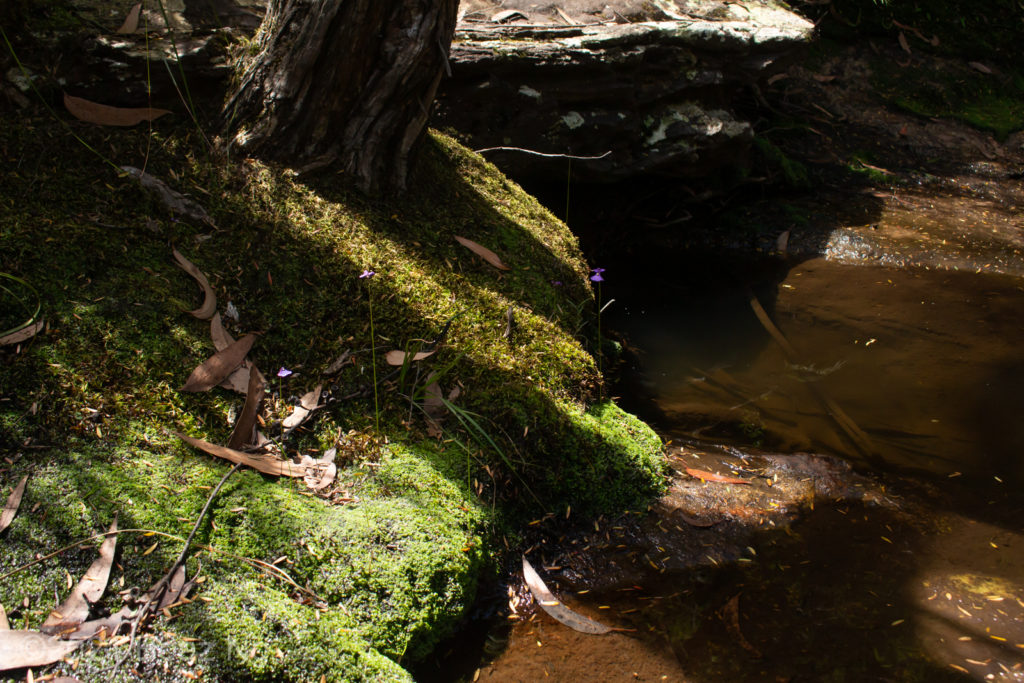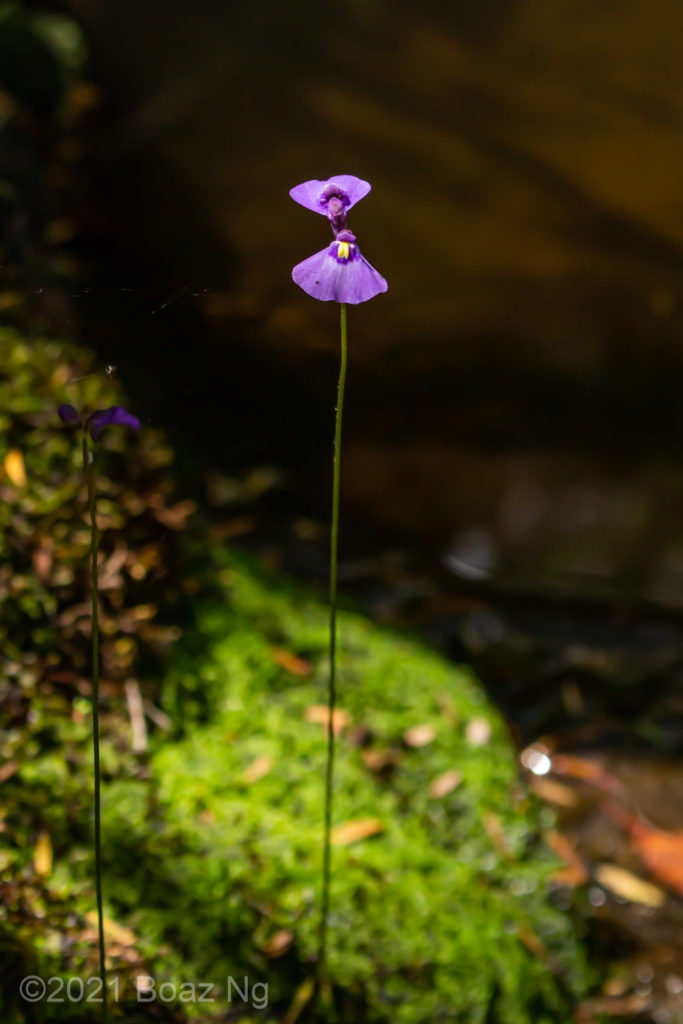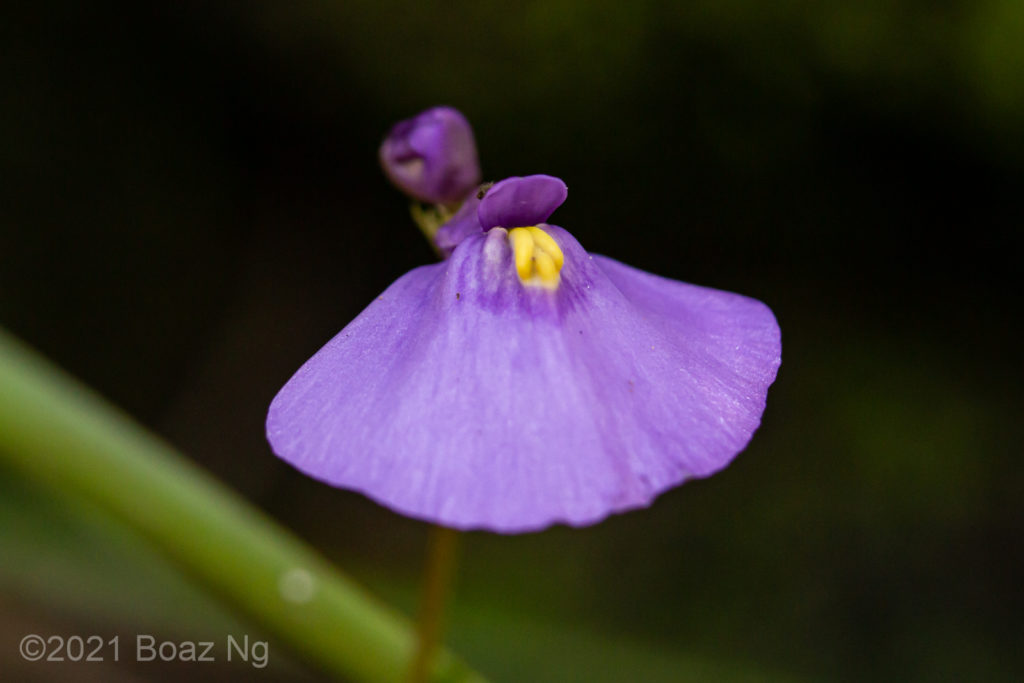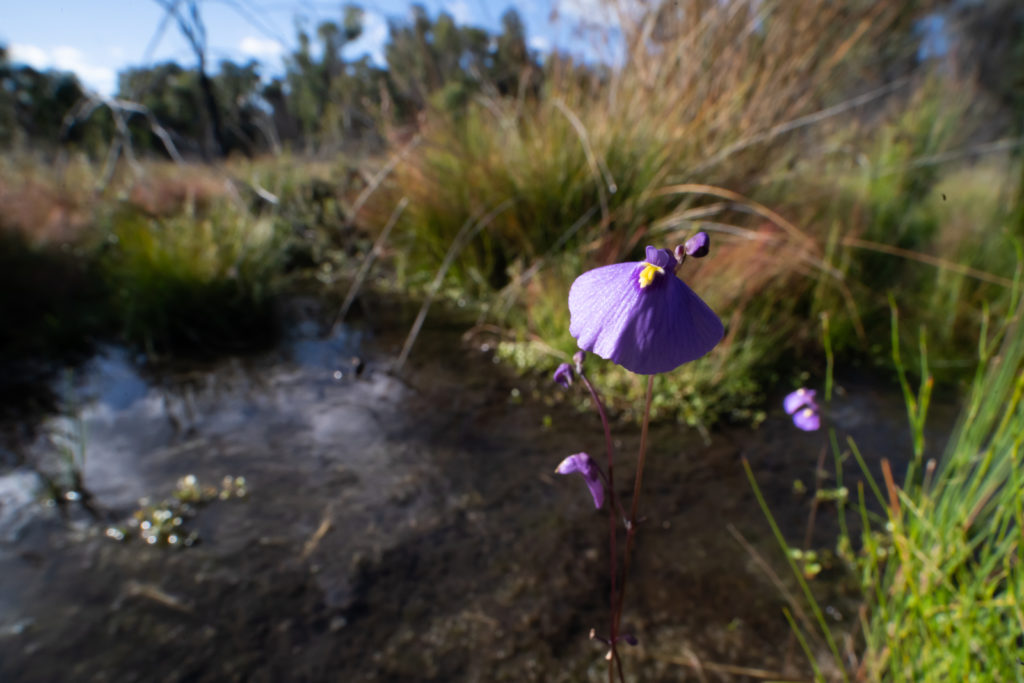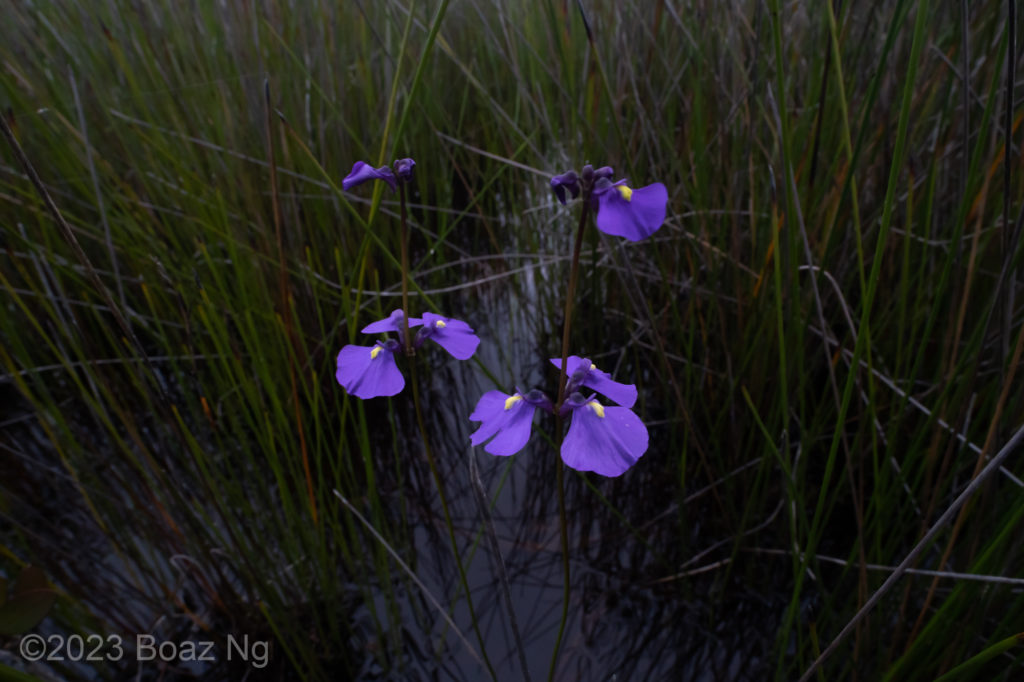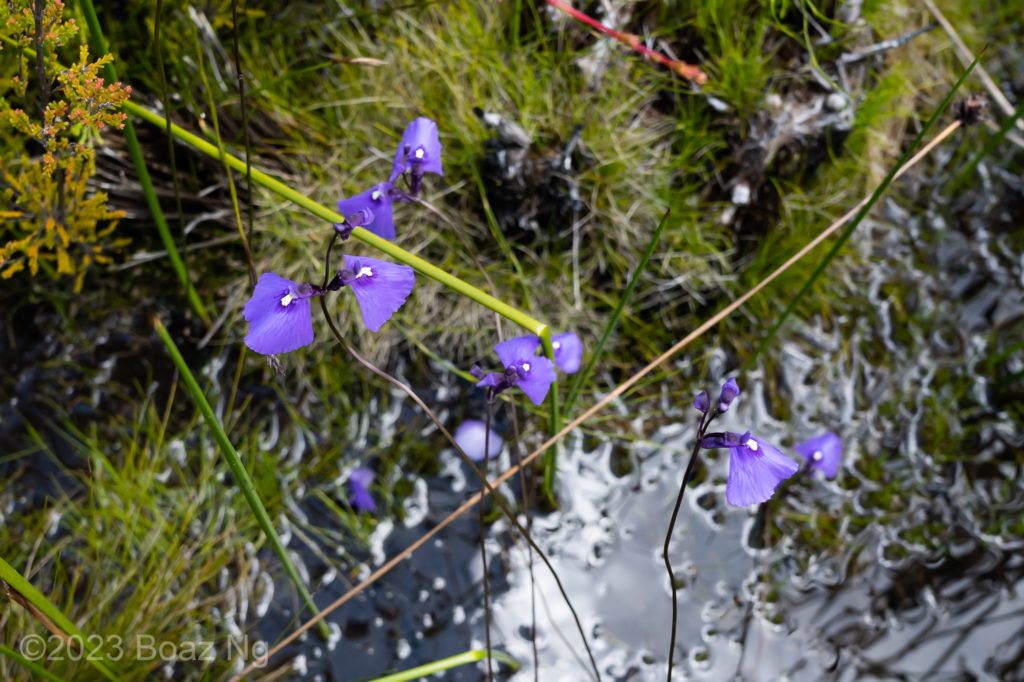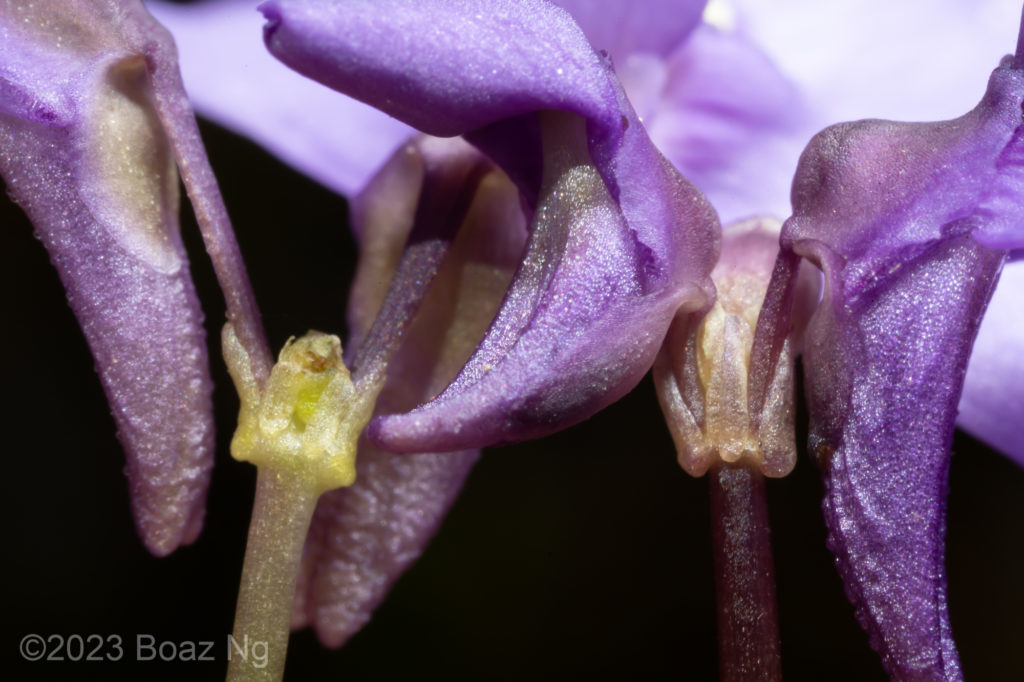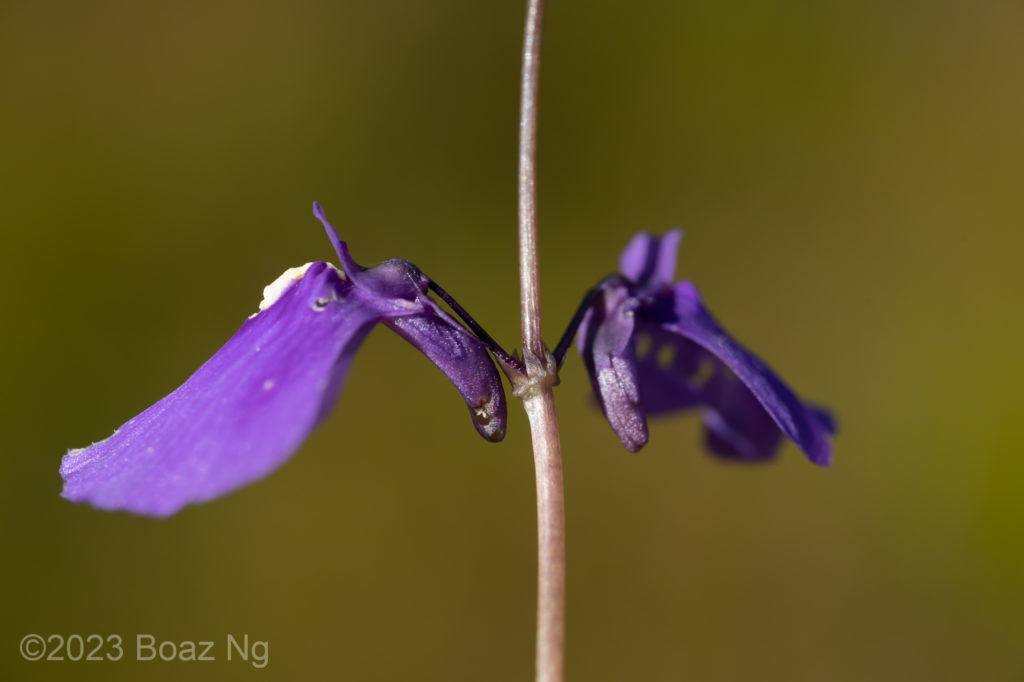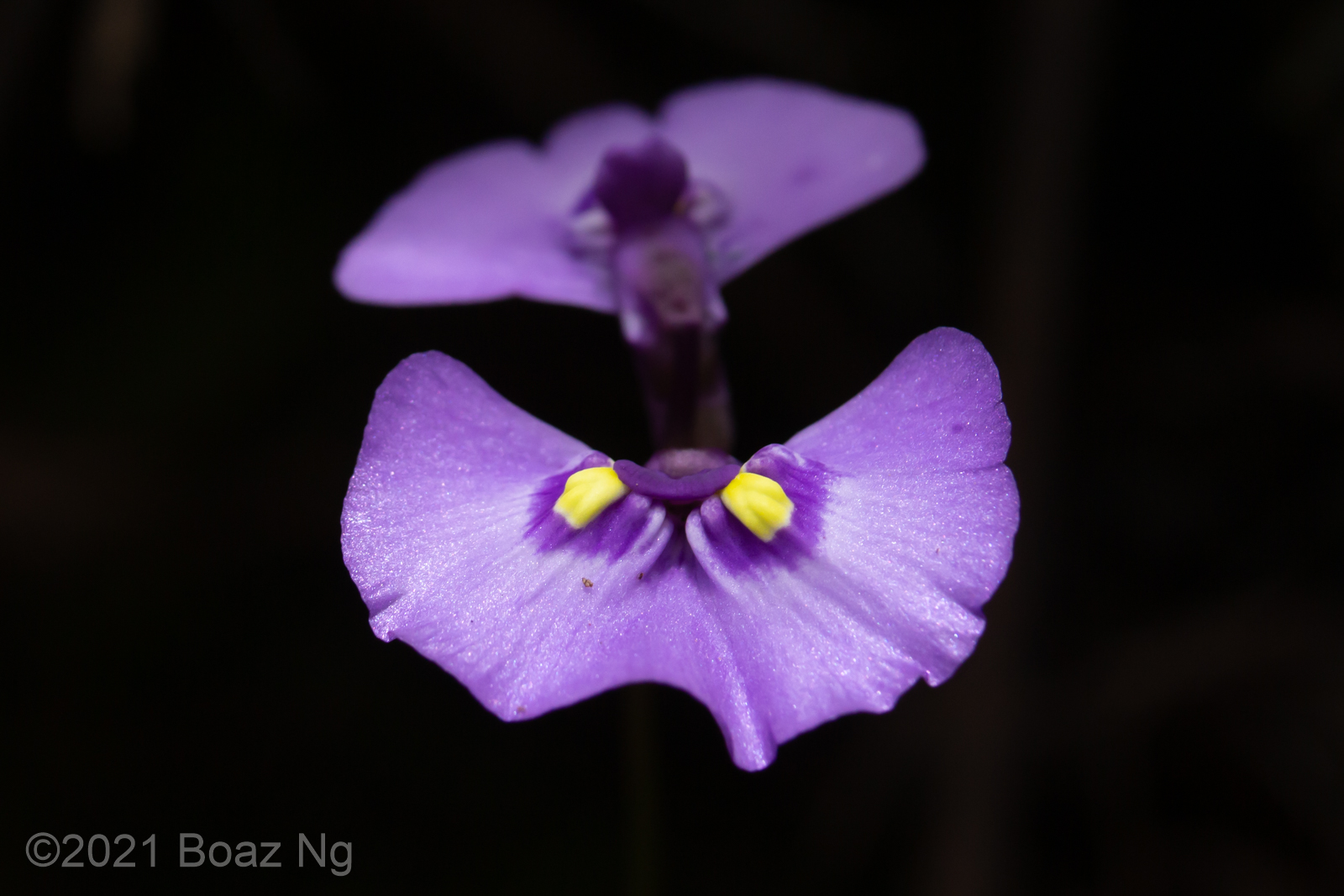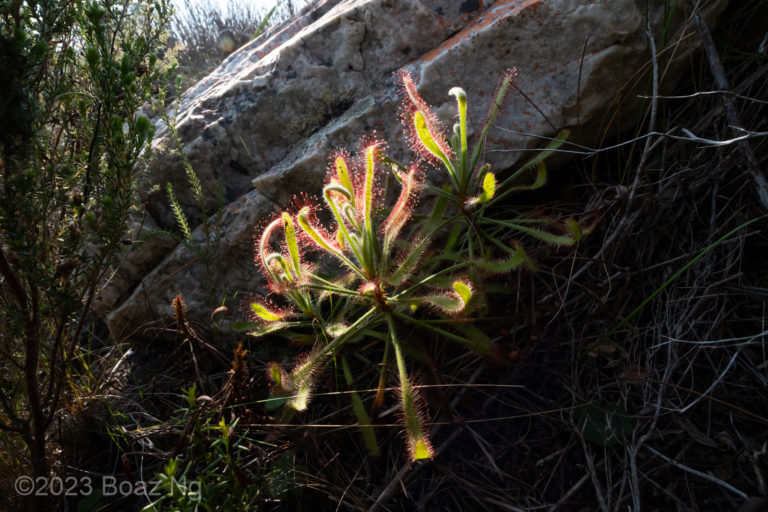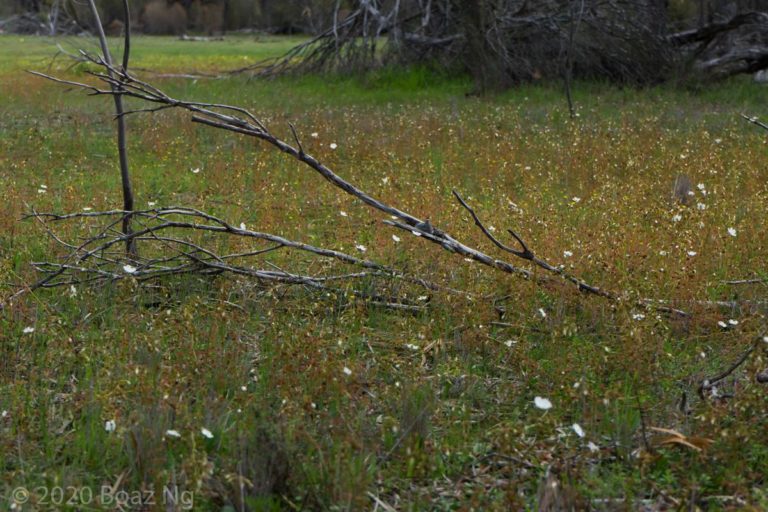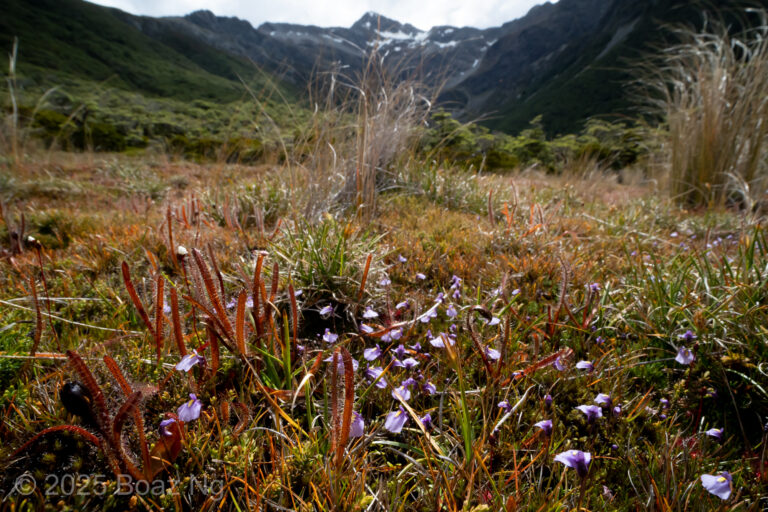Jobson and Baleeiro’s 2020 study of Utricularia dichotoma identified 8 closely related but distinct subspecies which together form the species complex. One of these is U. dichotoma subsp. aquilonia, which is named for its northerly distribution relative to other subspecies. I’ve observed this taxon in the Blue Mountains near Sydney, in the upland creeks of Ebor, around Torrington inland near the QLD border, and near Evans Head on the coast of northern NSW.
Amongst the species complex, the bracts are an important feature in distinguishing the subspecies. The bracts of U. dichotoma are all attached at the base of the structure, but differ in the shape of the appendages below and at the point of attachment. The upper bract appendage of subsp. aquilonia is moderately wide, rather long and triangular in shape, terminating with an acute point. At the base, the bract is very obviously gibbous (bulging) but a distinct downwards-pointing spur is absent.
The subspecies grows long flower stalks up to around 50 cm in length. The leaves have a single central vein, are short and stubby with a rounded edge.
As with the other members of the complex, the flowers are purple, with a flaring, skirted lower corolla lip and small upper corolla lip. The palate has a set of two or three yellow ridges. The corolla spur is broad, wedge-shaped and usually curved downwards. The subspecies is terrestrial or semiaquatic, occurring in the waterlogged substrates at the banks of shallow permanent creeks, pooled areas of seepages and in shallow heathland swamp. It can also grow submerged under shallow water.
The subspecies mainly grows in elevated creeks of the Great Dividing Range from around west of Sydney up to the border with QLD. Near the border, it is also found in heathland swamps. In inland northern NSW, this subspecies is distinguished from subsp. fontana by its larger size, broader spur and preference for wetter locations in the heathland (subsp. fontana is smaller, has a thin, pointed spur and prefers seepages). In practice, most subspecies of U. dichotoma are very similar and extremely difficult to distinguish without information of the locality and niche.
